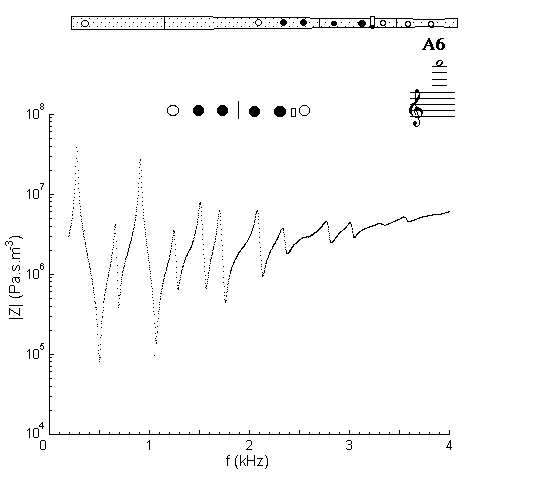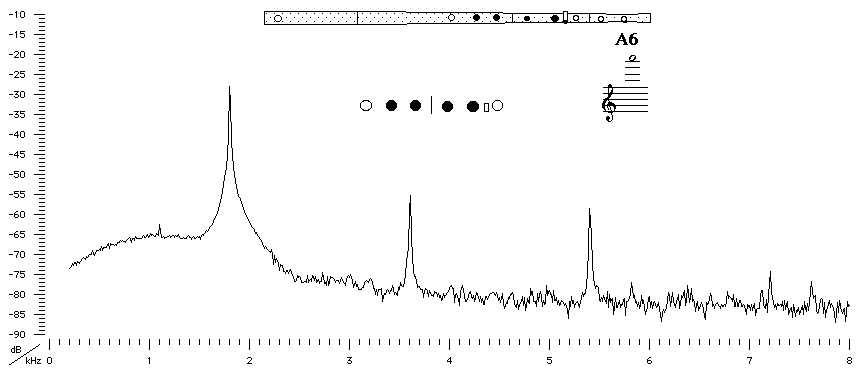| Acoustics of baroque, classical and modern flutes |
classical flute
|
A6 |

|
Acoustic and Fingering Schematic Non-specialist introduction
to acoustic impedance |
This fingering is out of tune - classical flutes intended to play in the third octave usually had extra keys, which allowed the designer more parameters to vary to maintain intonation over a wider range. The player was asked to play the fingerings 'where they were', rather than to tune them by varying the coverage of the embouchure hole. (The dimensions of the instrument are based on those of a large-hole Rudall and Rose flute: R & R #655 from the Bate Collection in Oxford.)

Sound spectrum
of a classical flute with a flared foot played using fingering for A6.
![]()
![]()
![]()
![]()
![]() You can hear A6
played by Geoffrey Collins.
You can hear A6
played by Geoffrey Collins.
| Acoustic measurements are available for these flutes - modern B, modern C, classical C, classical D, classical flared, baroque Sound clips are available for modern B, classical flared and baroque |
To compare flutes, it is easiest to open a separate browser window for each instrument. |